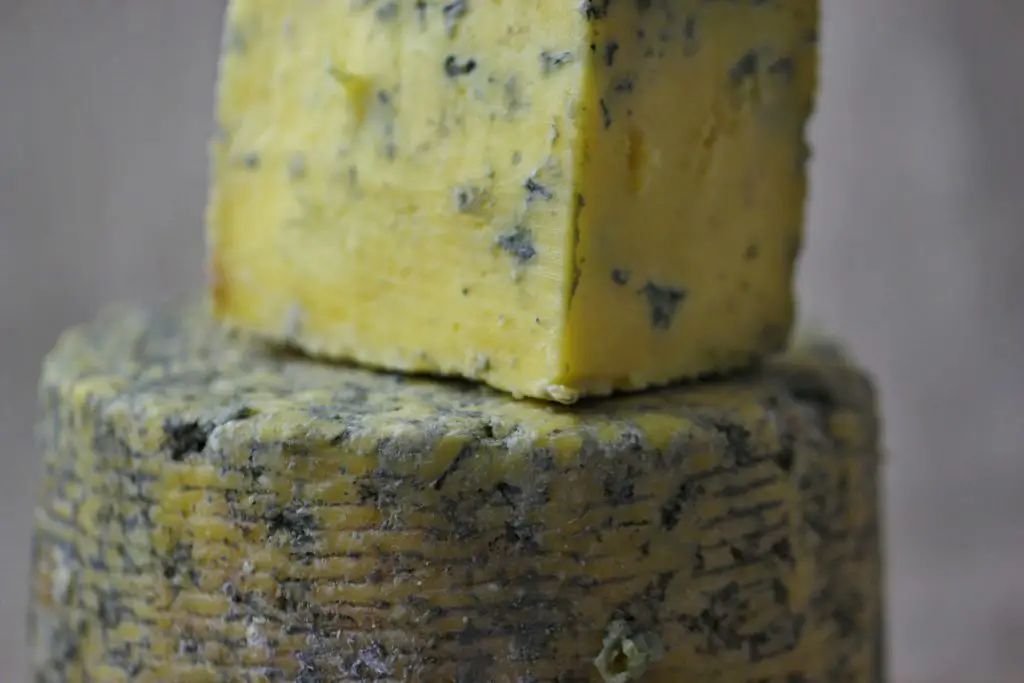Is blue cheese mold? This is an interesting question because if you just take a look at blue cheese it has greenish blue speckles scattered throughout the cheese. These speckles do look like a form of mold that has spread over the cheese. However, if it were mold, how the heck is it safe to eat. Let’s take a closer look to determine what is blue cheese.
Blue cheese begins with milk. A culture is added to the milk, which transforms the lactose (milk sugar) into lactic acid. This step assists in the coagulation process. A mold is then introduced into the milk. The common molds used for blue cheese are Penicillium glaucum and Penicillium roquefourti. These are ultimately what creates the classic blue veins found inside blue cheese. Yes, not all molds are bad.
After the mold is added, an enzyme known as rennet is placed inside the milk in order to promote coagulation of the milk into curds. After the milk sits to thicken, it is cut to separate the curds from the whey. The soon-to-be cheese sits for several hours before the whey is drained away, leaving only mostly curds behind. The curds are salted, transferred to a cylindrical plastic mold, and left to sit to drain any leftover whey.
Next, the cheese is transferred to age. Noticeable mold begins to grow on the outside of the blue cheese. Eventually, holes are poked through the cheese to allow the mold to begin to grow on the inside of the blue cheese. Samples are taken from the cheese until they show that the blue veins run from the center of the cheese to the outside. Once this occurs, the cheese is usually ready consumption or slightly prematurely ready to account for transportation time.
In summary, blue cheese contains a mold but is not just a mold. It is a cheese that develops its flavor and color from the addition of mold.

